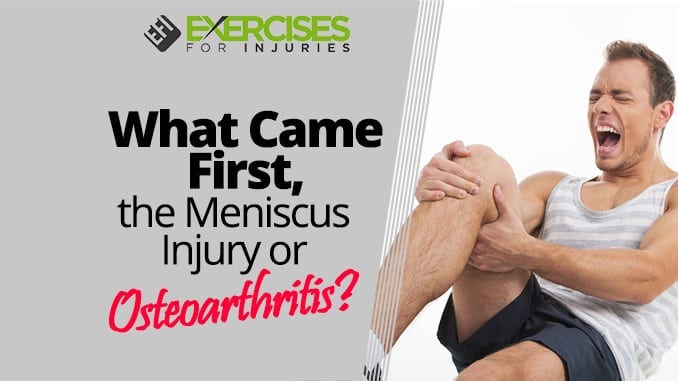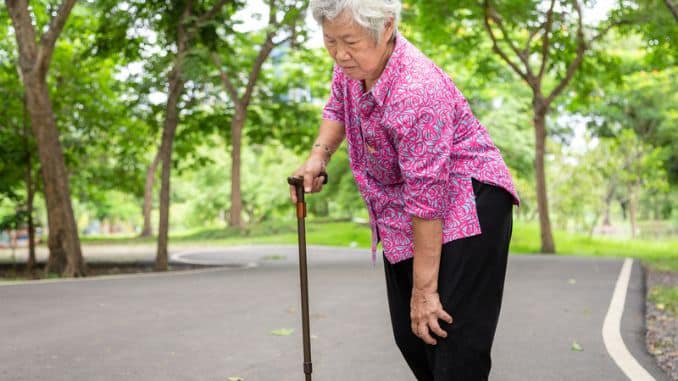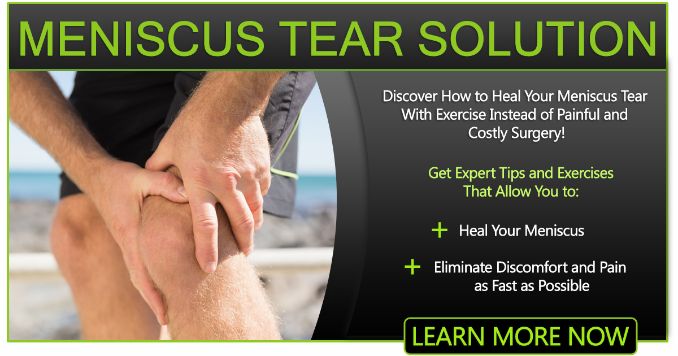
What Came First, the Meniscus Injury or Osteoarthritis? While the cause of knee osteoarthritis is not entirely known, doctors have a general idea of what may lead to injury.
Similarly, they have a general idea of what may cause a meniscus tear. Meniscal tears are often accompanied by a condition in the knee called osteoarthritis.
I am working on this month’s Injury of the Month. It is on meniscus injuries.
I started researching the injury workout and found some interesting findings. Let me share with you what I have seen.
CLICK HERE to watch the YouTube video.
Does Toe Out or In Put More Stress on the Knee When Walking?
What They Looked At:
Those with knee osteoarthritis tend to externally rotate their feet during gait, to unload the medial aspect of the knee by decreasing the adduction moment at the knee during late stance walking.
They got 11 healthy subjects to walk with their foot internally and externally rotated to see how this affected the knee.
What They Found Out:
Internal rotation of the foot increased knee adduction moment and lateral-medial shear force magnitude during the late stance phase of walking.
What Does This Mean:
The foot position is a compensation strategy to unload the medial and lateral compartments of the knee.
Rick’s Comments:
We might have to rethink toeing out for clients with knee osteoarthritis. The common thinking has been to work to move them back to the ideal foot position, but this may not be the best solution.
The toeing out may be a modification to decrease pain and knee stress and prevent injury progression.
Forcing a correction in the foot position may not be the best thing, but I still would work on recovery strategies for this patient to manage muscle tension and length.
Can Walking Lead to a Meniscus Injury?
If you are researching meniscus injuries, I know you are thinking, why are you talking about osteoarthritis? Give me a minute. Keep reading.
What They Looked At:
They looked at 30 non-osteoarthritic women and the knee forces during the stance phase of walking.
They looked at the peak external knee adduction moment, a combination of the ground reaction forces passing through the medial aspect of the center of the knee joint.
The big deal about peak external knee adduction moment is that it’s responsible for 70% of the total knee joint load passing through the medial tibiofemoral compartment during walking.
Interesting Stuff from the Introduction:
- Meniscal injury is a risk factor for the development and progression of knee osteoarthritis
- Meniscal injuries may be present with or without a history of significant trauma
- Meniscal injuries are risk factors for severe cartilage defects, diminished tibial cartilage volume, and increased tibial bone area.
What They Found Out:
“The presence of medial meniscal tears was also positively associated with the degree of internal foot rotation when the external knee adduction moment peaked during late stance, independent of the magnitude of the adductor moment.”
To sum it up, one’s walking gait can affect one risk of meniscal injury.
Rick’s Comments:
Very interesting. Those with more of an internally rotated foot during walking put greater force (peak external knee adduction moment) on the knee’s medial side, which led to an increased risk of meniscal damage.
Can Foot Position Affect Hamstring Activation?
What They Looked At:
Suppose they changed the natural foot position during gait. In that case, the researchers ask how this would affect knee adduction moment (KAM), lateral-medial shear forces, and the muscle activation ratio in those with knee osteoarthritis compared to a control group.
How Does a Meniscus Injury Lead to Knee Osteoarthritis?
Any time you have a tear in the meniscus in your knees, you increase your risk of osteoarthritis in those same joints. Meniscus tears are common in athletes, particularly those who participate in jumping and landing sports like basketball, soccer, and volleyball.
But, they can also occur in more sedentary individuals, particularly those who experience a sudden, traumatic twisting force.
What They Found Out:
- Those with knee osteoarthritis have an increased late stance knee adduction moment compared to a healthy group
- Those with knee osteoarthritis have a decreased medial-lateral hamstring activation compared to a healthy group
- External foot rotation decreased the knee adduction moment, lateral-medial shear force, and hamstring activation ratio.
- Internal foot rotation did not increase the knee adduction moment, lateral-medial shear force, and hamstring activation ratio
Rick’s Comments:
This confirms the articles from above.
The two interesting points are the research involved injured subjects and you can see how results can change with healthy and injured subjects.
This can be seen with the internal rotation of the foot not affecting things compared to the papers above.
The second point is the hamstring and how the foot position decreased the hamstring ratio. Remember, they looked at foot position. I can’t find the article, but it showed that hip position did not affect KAM.
A Few Other Comments on Foot Position, Meniscus Injuries, and Osteoarthritis:
- The peak external knee adduction moment during stance walking is similar in both dominant and nondominant limbs.
- They investigate how traditional quadriceps strengthening or neuromuscular exercises affect peak external knee adduction moment. Neuromuscular exercises are effective in ACL injury recovery, and that is what I go through in Knee Injury Solution.
I hope you enjoyed that research review.
I hope to you are thinking about foot position and meniscus injuries.
Rick Kaselj, MS



